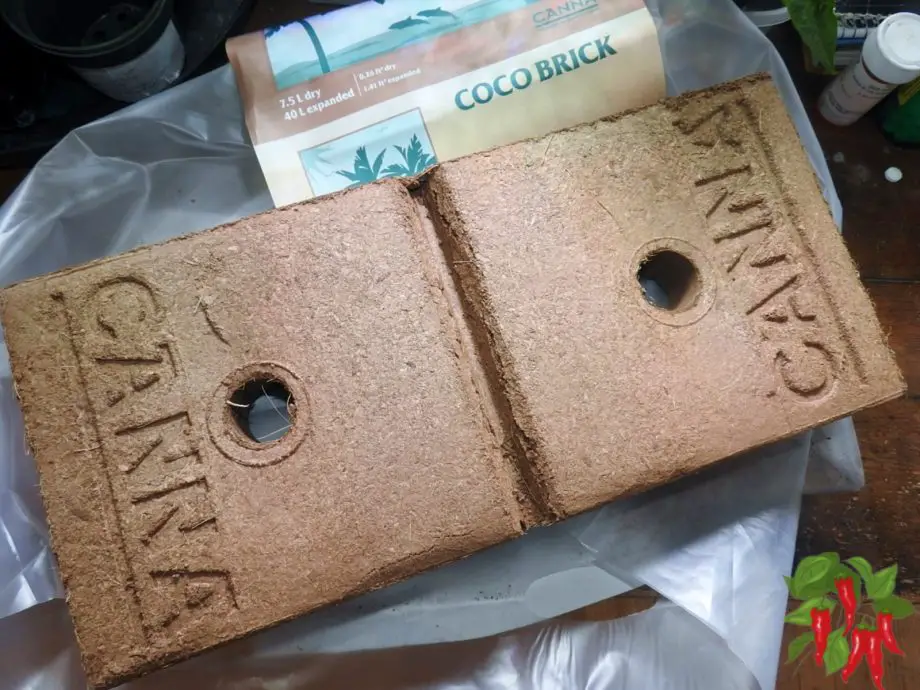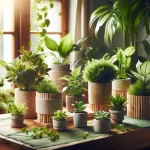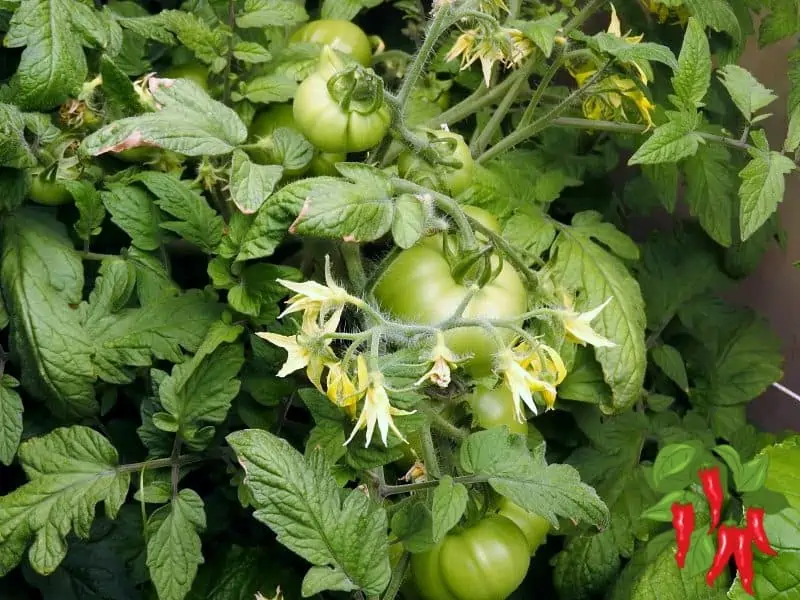This post may contain affiliate links. If you buy something from one of our links we may earn a commission. Thanks

If you are looking to start a hydroponic garden, then you need to know about the different types of grow mediums available.
The hydroponic grow medium you choose will act as a foundation for your plants and help them to grow healthy and strong.
In this blog post, we will discuss the different types of hydroponic grow mediums and what each one is best used for.
We will also provide some tips on how to choose the right growing medium for your needs!
When it comes to hydroponic gardening, the type of hydroponic grow medium you use can have a big impact on the success of your plants.
Grow mediums provide support for roots and help to regulate moisture and nutrient levels.
Hydroponic Grow Medium Types
When you are growing plants hydroponically, the type of growing medium you use is very important.
There are many different types of media that can be used in a hydroponic system, but not all of them are created equal.
Depending on the hydroponic system you are using some will work better than others.
We will discuss the benefits and drawbacks of some of the most common hydroponic growing mediums.
Hydroton Clay Pebbles
While there are many different types of grow mediums available, clay pellets are a popular option for hydroponic gardens.
They are also sold as LECA pebbles. LECA is an acronym for Lightweight Expanded Clay Aggregate.
Hydroton or LECA, also known as Lightweight Expanded Clay Aggregate, is a popular growing medium for hydroponic systems.
LECA is made by heating clay to a high temperature, which causes it to puff up and create small, lightweight pellets.
Hydroton has several advantages over other types of grow media. It is very easy to use since the pellets are the same size and shape.
This makes it easy to transplant plants and to get a uniform distribution of roots throughout the system.
In addition, hydroton is very porous, which allows roots to access oxygen and prevents them from becoming waterlogged.
However, there are also some disadvantages to using hydroton. Hydroton is not as nutrient-rich as some other types of growing media, so plants may need to be fertilized more often.
It also dries out faster than some other growing media. However, this can also be advantageous because more frequent watering also allows for more frequent feeding.
Overall, hydroton LECA is a good choice for many hydroponic growers, but it is important to weigh the pros and cons before making a decision.
If you’re looking for a versatile growing medium that can be used in a variety of hydroponic setups, clay pellets may be the right choice for you.
They can be cleaned and reused for many years. They are made from clay which has to be strip-mined so they are not great for the environment.
Grow Stones
Grow stones are very similar to hydroton but I think they are a better choice.
If you’re looking for an alternative to traditional grow media, you may have come across grow stones.
Grow stones are made from recycled glass, and they offer a number of advantages over other types of growing media. They’re lightweight and sterile, and they provide excellent drainage.
They also won’t compact over time, which means your plants will always have access to oxygen.
However, there are a few things to keep in mind before using grow stones. First, they can be expensive but can be reused indefinitely.
Second, they don’t hold onto nutrients as well as some other types of growing media, so you’ll need to fertilize more frequently.
But if you’re looking for a light and airy growing medium that provides excellent drainage, grow stones may be the perfect choice for you.
They are more irregular in shape and more porous than hydroton and so they allow for better aeration.
Because they are more porous than hydroton they won’t dry out quite as fast because they can absorb more nutrient solution.
Another benefit to consider is that they are made from recycled glass. They are easy on the environment. They can be reused and will last forever.
I don’t use hydroton any longer. Grow stones are my choice for a hydroponic medium.
Rockwool Hydroponics
Rockwool is one of the most popular hydroponic grow mediums on the market.
Rockwool is a type of hydroponic growing substrate made from spun basalt rock.
It is popular with hydroponic growers because it is lightweight, easy to handle, and provides good drainage and aeration.
Rockwool also has a high capacity for storing water and nutrients, making it ideal for use in drip irrigation systems.
However, there are some downsides to using Rockwool as a growing substrate.
One is that it can be difficult to control the pH level because it has a naturally high pH level.
So it is necessary to presoak Rockwool in an acidic solution to buffer its pH. Sometimes it can create an unwanted pH rise so it is important to monitor this level.
Overall, Rockwool is a versatile and effective growing substrate, but it is important to be aware of its potential drawbacks before using it in your hydroponic system.
Rockwool blocks are often used to start seeds. After germination, the plants are set in a permanent grow media.
Many greenhouses use Rockwool blocks or slabs to grow vegetables and they are watered with an automated drip irrigation system.
It is often used in commercial greenhouses and smaller hydroponic gardens because it is an excellent medium for plant roots.
Rockwool holds moisture well and provides good drainage, aeration, and root support. It is also easy to use and relatively inexpensive.
Rockwool is made by heating rocks to high temperatures until they melt. The molten rock is then spun into fibers that are then formed into blocks or slabs.
The Rockwool blocks or slabs are then placed in a hydroponic system where they provide a home for the roots of plants.
It’s hard to believe but with proper irrigation an 8″ by 8″ block can grow a full-sized tomato plant.
Rockwool is an excellent growing medium for hydroponics because it provides all the benefits of soilHydroponic Gardening At Home: Easy Gardens Without Soil without any of the drawbacks.
It is sterile, so there is no risk of introducing diseases or pests into the system. It is also free of toxins and chemicals, making it safe for both plants and people.
One caveat with Rockwool is it can hold a lot of water so it needs to be watered carefully.
Perlite Hydroponics Grow Medium
Perlite is a versatile hydroponic grow medium that has many uses. Perlite is a type of volcanic glass that is often used in hydroponics.
It is lightweight and has a high porosity, which makes it ideal for growing plants.
Perlite holds onto moisture well and provides good drainage. Additionally, perlite is easy to work with and can be used to grow a wide variety of plants.
The only disadvantage to perlite is that it crumbles and generally can’t be reused. However, it is fairly inexpensive to replace.
Overall, Perlite is a good option for hydroponic gardening, but it is important to be aware of its potential drawbacks.
Because of this, I prefer to use grow stones even though they cost more initially because I only need to buy them once.
Perlite can be used in DWC to hold plants in place. It also can be used in flood and drain systems too.
I recommend using chunky perlite for this. Perlite comes in different sizes; if it is too small, it will come out of your net pots.
Perlite is often mixed with coco coir to provide faster dry-down times. It does not matter what size of perlite you use for this.
Coco Coir Hydroponics
Coconut coir is another excellent hydroponic grow medium. It is made from the husks of coconuts and is 100% natural.
Coco coir is a type of growing medium made from coconut husks. It is an environmentally friendly option since it is a waste product that would otherwise end up in landfills.
Coco coir is also very absorbent, which means it can help to reduce watering times and generally drains so fast it is hard to overwater it.
However, one downside of coco coir is that it can be difficult to manage nutrient levels.
Coco coir tends to store potassium at the expense of other nutrients. That means coco coir needs additional CalMag because it balances this out.
Overall, coco coir is a great option for those looking for an eco-friendly growing medium, but it is important to keep an eye on nutrient levels and drainage.
Coconut coir is a great choice for growing plants because it is lightweight, yet durable.
Additionally, coconut coir holds onto moisture well and provides good drainage and excellent aeration.
Coconut coir is also easy to work with and can be used to grow a wide variety of plants.

Coconut Coir Hydroponics Grow Medium
Many people may not know that coco coir is a hydroponic growing medium. It looks a lot like soil but it is not.
Coco coir is available loose and in bricks. I prefer using coco bricks. They are easier to store and can be rehydrated easily.
One of the great things about coco coir hydroponics is that it is relatively easy to set up and maintain.
Coco coir provides an ideal growing medium for plants, delivering nutrients directly to the roots.
I have tried many brands of coco coir and some are very good but I have found Canna Coco to have the best and most consistent quality.
This efficient growing method also uses less water than traditional gardening, making it a more sustainable option.
In addition, coco coir hydroponics can be done indoors or out, providing gardeners with a wide range of options.
Whether you are looking to start a small herb garden on your windowsill or a large-scale commercial operation, coco coir hydroponics can provide the perfect solution.
The one downside of using coco coir is that it can attract fungus gnats. I found using bricks instead of loose coco eliminates this.
Be careful to buy coco coir meant for agricultural use. Coconut palms grow close to the seashore and absorb a lot of salt.
This needs to be leached out when it is processed. Coco coir is also sold for animal bedding.
It’s cheaper but plants won’t do well in it and the overall quality is much lower.
Additional Ideas on Choosing a Hydroponic Grow Media
Choosing the right hydroponic grow medium is a critical decision for any hydroponic gardener.
The choice you make will have a direct impact on the health and productivity of your plants.
While we’ve covered some of the popular hydroponic grow mediums, there are other important factors to consider. Below, we delve into these additional considerations:
Understanding Your Plant’s Specific Needs
Different plants have unique requirements when it comes to moisture, aeration, and nutrient uptake.
Understanding these needs can guide your decision in choosing the appropriate medium.
For example, plants that need higher moisture retention might thrive better in coco coir, while those that require more aeration might benefit from perlite or grow stones.
Compatibility with Your Hydroponic System
The type of hydroponic system you’re using might also influence the grow medium you choose. Some media are better suited for particular systems.
For example, Rockwool is often used with drip irrigation systems, while grow stones might be more suitable for deep water culture (DWC).
Budget Constraints
Hydroponic grow mediums vary in price. While some options might offer superior performance, they might also be more costly.
It’s crucial to find a balance between quality and budget constraints. Reusable mediums like grow stones can be a cost-effective choice in the long run.
Environmental Considerations
If sustainability is a key concern for you, considering the environmental impact of the grow medium is vital.
Choosing a medium made from recycled materials or one that has a minimal negative impact on the environment might align with your values as a gardener.
Some materials like hydroton or grow stones can be used over and over while rock wool and perlite are single use.
Ease of Use and Availability
Some grow mediums are easier to handle and more readily available than others. Consider the learning curve associated with using a new medium and whether you can easily find it in your location.
pH Control and Nutrient Management
Some media, like Rockwool, may require additional efforts in pH control. Consider how much time and effort you’re willing to put into managing these factors.
The complexity of choosing a hydroponic grow medium goes beyond merely understanding different types of media.
It involves a holistic understanding of your plants’ needs, your system’s requirements, budget considerations, and even personal values such as environmental consciousness.
By taking all these factors into account, you can make a more informed decision, fostering a healthier and more productive hydroponic garden.
Whether you are a hobbyist or a commercial grower, these considerations provide a roadmap to success in hydroponic gardening.
Hydroponic Grow Medium FAQs
When it comes to hydroponic grow mediums, gardeners both seasoned and new often have several questions about their choices and usage.
Whether it’s the ecological impact, cost-efficiency, or suitability for different plants, understanding the medium can significantly influence your gardening success.
Here are answers to some of the most frequently asked questions about hydroponic grow mediums:
Q: How do I choose the right hydroponic grow medium for my plants?
A: The right medium depends on the type of plants you’re growing, the hydroponic system you’re using, your budget, and environmental considerations.
For example, coco coir is eco-friendly and versatile, while perlite is lightweight but may need replacement.
Understanding your specific needs and matching them to the properties of the grow medium is key.
Q: Can I mix different types of hydroponic grow mediums?
A: Yes, mixing different grow mediums can sometimes provide the benefits of both.
For example, mixing perlite with coco coir can create a medium that retains moisture well but also provides fast drainage.
Experimenting with different combinations and proportions can lead to a customized solution that perfectly fits your plants’ needs.
Q: Are hydroponic grow mediums reusable?
A: Some hydroponic grow mediums like grow stones and clay pellets are reusable and can be cleaned and used for many years.
Others like perlite tend to crumble and may need to be replaced after a single use.
Considering reusability might be essential if you’re looking for a cost-effective or environmentally friendly solution.
Q: How do hydroponic grow mediums affect the nutritional needs of my plants?
A: Different grow mediums can influence the nutrient availability to your plants. Some mediums like coco coir might require additional nutrients like CalMag to balance them out, while others like Rockwool might need careful pH monitoring.
Understanding the properties of your chosen medium and adjusting your nutrient solution accordingly will help your plants thrive.
Hydroponic Grow Medium What To Know Final Thoughts
Now that you know a little bit more about hydroponic grow mediums, it’s time to choose the right one for your needs.
If you are looking for an easy-to-use grow medium that can be used to grow a wide variety of plants, Rockwool or coconut coir may be the right choice for you.
If you are looking for a lightweight grow medium that provides good drainage, perlite may be the right choice for you.
All of the above hydroponic grow mediums will produce good results in hydroponic systems. But you need to be aware they are all a bit different and have their own pros and cons.
No matter which hydroponic grow medium you choose combined with proper feeding and watering you can be sure that your plants will thrive!
Read more:
Rapid Daily Urban Gardening Ideas
Are Hydroponic Nutrients Required? 7 Easy Tips For Beginners
Hydroponic Gardening At Home: Easy Gardens Without Soil
LED Hydroponic Lighting: Easily Grow Plants with LED Lights
Visit my Amazon Influencer Page for videos and gardening products Grow Your Own Garden













